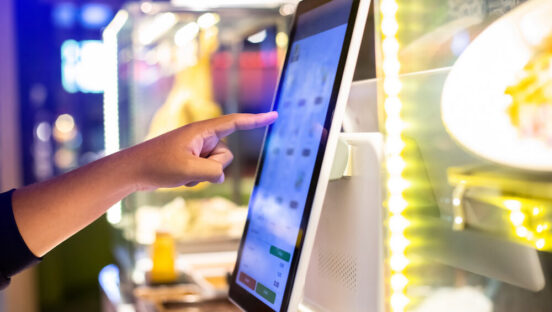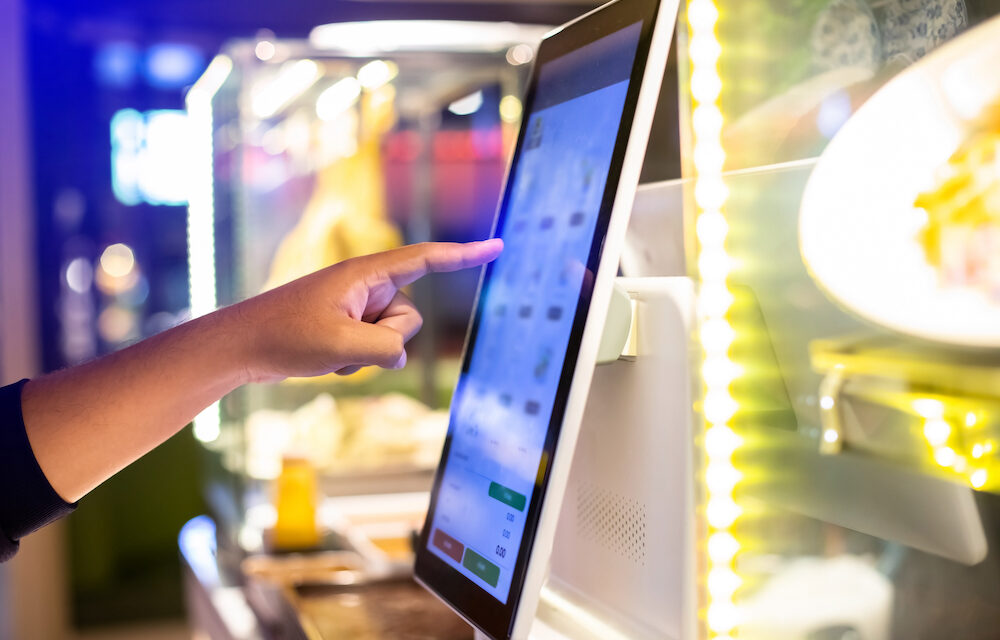Digital sales keep growing for restaurant brands in the quick-service and fast-casual segments, while kiosks look poised for a big comeback, according to a new report from Qu, a Bethesda, Maryland-based POS company.
The fifth annual survey, the Qu 2024 State of Digital Report, found that digital sales accounted for between 26% and 50% of overall sales for nearly one-half of U.S. quick-service and fast-casual brands last year, while more than three quarters of the brands (77%) increased their digital sales in 2023. And 87% of the brands surveyed expect digital sales to grow again in 2024.
The report also noted that more kiosks will be put to work in restaurants this year along with new mobile apps and voice AI on the phone and in the drive-thru. The latter, in fact, topped quick-service and fast-casual brands’ list of new ordering channels planned for 2024.
Related: 10 amazing pizzaiolas to watch in 2024
Self-service preferences have emerged as key to helping brands manage labor challenges and increase sales, the report found. The industry’s future will be data-driven with API-centric platforms, new loyalty frameworks and more usage of AI.
“Brands have found the sweet-spot mix of digital and in-person ordering after a roller-coaster few years of getting their online house in order,” Qu CEO Amir Hudda said. “Guests are more comfortable ordering on screens and from their mobile devices. Combine that with a tight labor market, and we’re seeing a shift to self-serve ordering even in the store.”
The Qu 2024 State of Digital Report analyzes market trends and predictions from a survey of respondents that include the largest multi-brand, multi-unit restaurant operators. The findings in the report include the top challenges for enterprise restaurant operators, investment priorities, innovations, digital sales trends, and what brands can expect for 2024.
Key trends highlighted in the report include:
Kiosks are making a comeback. Kiosks are the No. 1 order channel to add with 44% of brands planning them in 2024. The top order channels restaurants plan to add in 2024 are:
1. Kiosks
2. Mobile apps
3. Expanded delivery partners
4. Phone AI ordering
5. Voice ordering in drive-thru
“Self-serve options give guests more choices and more control while driving higher check sizes, easing labor challenges, and lowering operating costs,” Hudda said. “We expect this trend to continue into AI ordering over the next few years. It’s an exciting time.”
Fewer swings and surprises in digital sales. The new frontier is optimization of digital channels to drive profitability and healthy revenue growth, according to the report. Digital ordering is still larger at fast casuals versus quick-service. Nearly one-half of fast casuals achieved 26% to 50% digital sales, while nearly half of quick-service brands had 11% to 25% digital sales.
Loyalty 3.0 emerges as the top tech investment for 2024. The vast majority (80%) of respondents say loyalty is not working for their brand. The report predicts that a new data-centric loyalty framework will emerge with guest experience at the core.
Flexible platforms are the future. The shift to flexible API and data-driven platforms is well underway with 65% of respondents saying they plan to transition to a cloud-based, API-forward unified ordering and commerce platform or have already done so. These platforms are proving to deliver ROI through access to and normalization of data, unlocking capabilities for single source of truth and guest personalization, the report states.
“Overall the report revealed good news for the market,” Hudda said. “Brands have learned what is working for guests and are investing in modernizing and elevating the guest experience. As the economy and market settle into predictability, we’ll start to see more innovation and a focus on technology for guest acquisition, loyalty and ordering advancements.”
The Qu 2024 State of Digital Report is based on a survey of industry leaders at enterprise restaurant brands. More than 85% of the respondents were C-Suite, VP, or director-level executives at multi-brand, multi-unit operators with a minimum of 20 locations in the United States.














